LAB REPORT
Science and Technology Making Headlines
Sept. 4, 2015
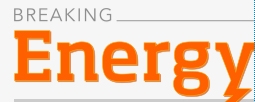
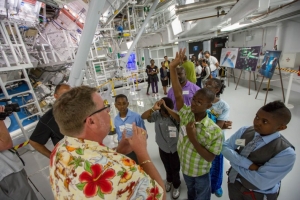
A group of students gets a tour of the National Ignition Facility at Lawrence Livermore National Lab as part of the My Brother’s Keeper Initiative.
Feeding the pipeline
Energy Secretary Ernest Moniz says the department is constantly looking for new ideas and creative solutions to combat some of the world’s biggest issues: nuclear security, climate change and energy security, to name a few.
In a recent blog Moniz writes: “These challenges can only be met if we have all hands on deck with a diverse workforce from all different backgrounds who are engaged in science and solutions. That’s why the Department launched the Minorities in Energy Initiative in 2013. That’s why we highlight Women in STEM on the Energy.gov website. And that’s why I joined President Obama’s My Brother’s Keeper Task Force in March.”
The My Brother’s Keeper Initiative aims to address the persistent opportunity gaps faced by young men of color in this country. As part of the task force, the Energy Department hopes to encourage minority students to explore the abundance of opportunities at their disposal in the fields of science, technology, engineering and math (STEM).
At Lawrence Livermore National Lab, groups of young men from Oakland and San Francisco got a tour of the National Ignition Facility to learn about the world’s most powerful laser. They also created “elephant toothpaste” during a hands-on Fun With Science experiment.


Lawrence Livermore engineers Eric Duoss (left) and Tom Wilson use an additive manufacturing process called direct ink writing to develop an engineered “foam” cushion. Photo by George Kitrinos/LLNL
Better ways for 3D printing
Researchers from Lawrence Livermore and the Bay Area company Autodesk are joining forces to explore how design software can accelerate innovation for three-dimensional printing of advanced materials.
The technique involves a computer deciding how to manufacture a material and shape that material’s design all at the same time.
The technology could transform the way things are made — from improving designs on bicycle helmets, the first task LLNL and Autodesk will attempt, to reshaping bridges and mastering the art of artificial limbs.

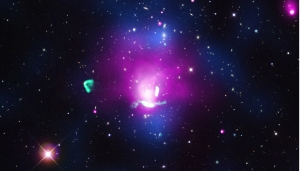
A collision of galaxy "clusters." Image courtesy of NASA/CXC/University of Hamburg/F. de Gasperin et. al, SDSS and NRAO/VLA.
'Radio phoenix' rises from the ashes
Astronomers have found evidence for a faded electron cloud “coming back to life,” much like the mythical phoenix, after two galaxy clusters collided.
This “radio phoenix,” so-called because the high-energy electrons radiate primarily at radio frequencies, is found in Abell 1033. The system is located about 1.6 billion light years from Earth.
By combining data from NASA’s Chandra X-ray Observatory, the Westerbork Synthesis Radio Telescope in the Netherlands, NSF’s Karl Jansky Very Large Array (VLA) and the Sloan Digital Sky Survey (SDSS), astronomers were able to re-create the scientific account behind the cosmic story of the radio phoenix.
Lawrence Livermore scientist Will Dawson mapped the galaxy distribution and performed the merger dynamics analysis. “This provided evidence that we were dealing with a major cluster merger (i.e., a merger between two large and relatively equal mass galaxy clusters) capable of generating a plasma shock, which could awaken the radio phoenix,” Dawson said.

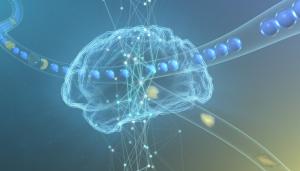
Lawrence Livermore researchers are designing more cores that simulate the power of the human brain.
The brains behind the machine
Modern computing is built around, at its very core, adding and subtracting numbers. Simple calculations running billions of times per second keep track of all the important values, from what operating system you’re running to your stage in the next online game. With the unveiling of the new TrueNorth chip, IBM is fundamentally challenging that method with a chip based onthe human brain.
Even though more cores are packed into processors and new forms of memory storage are designed, computing technology is nowhere close to the power of the human brain. The human brain has roughly 100 trillion synapses – a neural network that took 96 racks of the Lawrence Livermore National Lab’s Sequioa supercomputer to simulate, and even then, the supercomputer was only able to perform that simulation at a speed 1,500 times slower than the human brain.

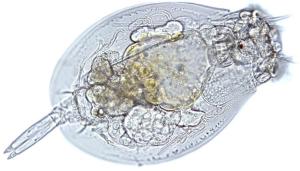
This photograph of the rotifer Euchlanis shows all the internal organs. Rotifers are animals with very few cells, less than 1,000. Lawrence Livermore is working on research that would prevent rotifers from eating algal crops. Image courtesy of Microscopy UK
Protecting the algae below
A Lawrence Livermore team has received an additional $1 million to protect algal crops by developing “probiotic” bacteria to combat pond infestation and increase ecosystem function and resilience.
Algal biomass can be converted to advanced biofuels that offer promising alternatives to petroleum-based diesel and jet fuels. Additionally, algae can be used to make a range of other valuable bioproducts, such as industrial chemicals, biobased polymers and proteins.
Annual productivity is a key metric for algal biofuel production that, if optimized, could significantly decrease and stabilize biofuel price per gallon. Since grazers can result in a 30 percent loss in annual biomass productivity, a consistent mechanism for preventing predators will increase productivity and in turn decrease biofuel cost per gallon.
“We are only just beginning to understand that the pond microbiome is not only an indicator of health, but also a tool for crop protection,” said Rhona Stuart, one of the team members from LLNL.





